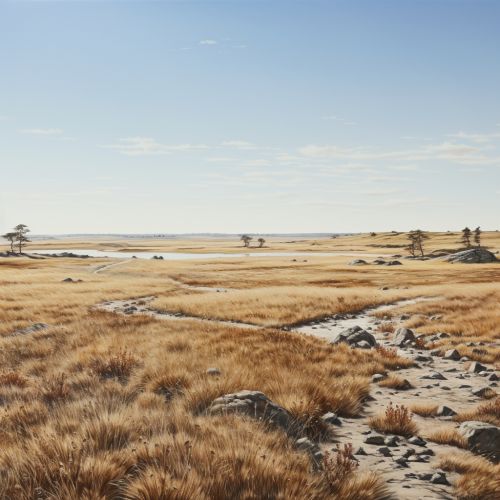Tundra
Overview
The Tundra is a type of biome characterized by its cold climate, lack of high trees, and short growing seasons. It is one of the most extreme and challenging environments on Earth, with average temperatures ranging from -40°C in winter to 12°C in summer. The word "tundra" originates from the Finnish word "tunturi", meaning treeless plain.
Geography and Climate
The tundra biome is found in the high latitudes of the Northern Hemisphere, in regions such as Arctic North America and Eurasia, and on the Antarctic Peninsula in the Southern Hemisphere. It is the coldest of all biomes, with long, harsh winters and short, cool summers. The climate is characterized by low precipitation, with most of it falling as snow. The average annual temperature is -10°C, but can drop as low as -50°C in the winter months.


Flora and Fauna
Despite its harsh conditions, the tundra is home to a variety of plant and animal species. The flora of the tundra includes low-growing plants such as mosses, lichens, grasses, and dwarf shrubs. Trees are generally absent due to the permafrost and harsh climate conditions.
The fauna of the tundra is equally diverse, with species adapted to survive in the extreme conditions. These include mammals such as the Arctic fox, polar bear, and caribou, as well as a variety of bird species. Insects and other invertebrates are also present, but their activity is largely limited to the short summer season.
Permafrost
One of the defining features of the tundra is the presence of permafrost, a layer of permanently frozen soil that lies beneath the surface. Permafrost can reach depths of up to 1,500 meters and its presence has a significant impact on the ecology and geology of the tundra. It limits the depth of plant roots, affects the drainage of water, and contributes to the formation of characteristic landforms such as pingos and polygonal ground.
Human Impact and Conservation
Human activity has had a significant impact on the tundra. Climate change, in particular, poses a major threat to this biome, as rising temperatures are causing the permafrost to thaw, leading to changes in the landscape and ecosystem. Other threats include oil and gas exploration, mining, and overhunting.
Conservation efforts in the tundra are focused on protecting its unique biodiversity and mitigating the impacts of climate change. This includes establishing protected areas, regulating hunting and fishing, and promoting sustainable practices in industries such as mining and oil extraction.
